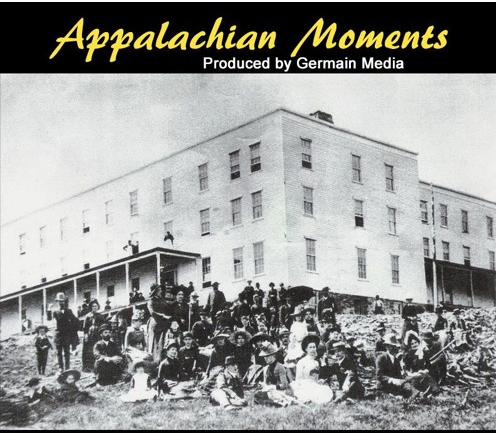Frequent visitors to the area attempting to escape the summer heat led Union Civil War General John T. Wilder to construct a 20-room spruce log lodge atop Roan Mountain in 1877. As its popularity grew, he constructed a luxury resort atop Roan Mountain in 1885 which straddled the TN/NC line, but more on that later.
A promotional booklet published around 1900 touted the resort as the highest human habitation east of the Rockies and a sure cure for hay fever and insomnia! And that’s not all!
Even though an early promotional piece states that the views are too awe inspiring for description and too lovely to paint, the booklet continues for 18 more pages attempting to do just that!
The hotel was described as, “So high above the clouds and storms, that the rare air at the top is full of healthy electricity,” and the booklet also shares the widely held belief at the time in history that lightning never strikes the top of a mountain!”
Rates ranged from $2 dollars a day to $15 a week.
There was a line painted across the floor (and a banquet table!) of the dining room indicating the state line. This demarcation was of practical importance to guests as the consumption of alcohol was allowed in Tennessee, but illegal in North Carolina. Legend has it that a local sheriff from North Carolina would linger about the dining room hoping to catch a patron crossing the line with his or her drink.
At the time of its construction, the three-story Cloudland Hotel had the highest elevation and was thus the tallest building above sea level anywhere east of the Rocky Mountains.
The hotel, capable of handling several hundred guests, exposed its broad sides to the violent winds without using chains anchored to stones like other mountaintop hotels. However, the roof of the Cloudland Hotel collapsed during high winds on two occasions forcing the owners to moor it with heavy rocks.
While the weather was ideal in summer months, at night the thermometer often dropped to 40 degrees, prompting the staff to burn huge logs in all the fireplaces, even in the middle of July and August. The fires were kept lit day and night for those who desired extra warmth.
On some of the mountaintop grassy balds, local farms could be observed. A few curious visitors became acquainted with some of the locals, whom they described as being perfectly “civil and safe,” thank goodness!
The mountaineers owned sheep, cattle, horses and pigs. One guest interestingly noted that, while the razorback pig seemed to live a carefree life, it would stampede down the mountain at the mere mention of salt.
The high operating costs of maintaining a mountain-top hotel eventually doomed the Cloudland. The hotel would be abandoned by 1910, and quickly fell into a state of disrepair. A new owner auctioned off the decaying building room-by-room. Today tourists still flock to that grassy mountain top, but all that remains of the grand hotel are widely scattered piles of rubble.
If you would like to hear the audio version, click below, and thanks again for liking, commenting and sharing this post!

